I wore out my old garden lounge chair, and have had to purchase another, the kind that’s called a zero gravity chair but is really just a recliner. They’re cheap and ugly, but suit my purposes quite well. I’ve tried to “relax” (sleep) in one of the chairs we have scattered on the various stone patios in the garden, but I can’t get the angle right, and even if I prop my legs onto a boulder, or the walls of the firepit by the swimming pond, they don’t give proper support and my legs fall asleep before I do.
On warm evenings after a day at the office, or weekends when I’m not working, I have a regular routine, roam through the garden to see what’s blooming or in bud, pull a few weeds, take a few photos for this journal, and snooze for a bit near one of the waterfalls to drown out the sounds of the distant highway. I am often awakened by chirping birds or croaking frogs, or by my growling, hungry stomach. By mid June I skip the lounge chair and float in the swimming pond (above), which is more cooling than air conditioning, but more challenging to sleep in with koi nibbling at your toes.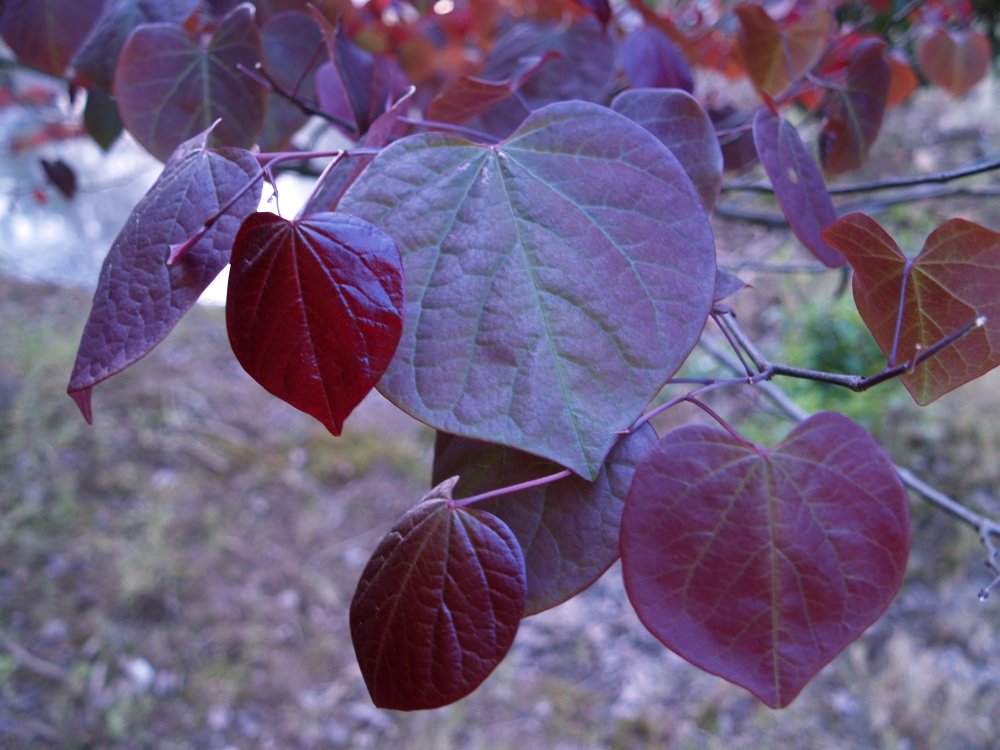
The garden has matured to provide almost total privacy from April through October with a mix of evergreen hollies and magnolias, Colorado spruces and cryptomerias, and dogwoods, redbuds (Forest Pansy redbud, above), fringetree, deciduous magnolias, and other flowering trees that fill the gaps. Evergreen and flowering shrubs along the borders of the rear garden create a visual and physical barrier should the neighbors’ kids decide to visit, so that there is almost no evidence of the surrounding homes.
There is something blooming in the garden from February through early December, but from April into early June, before the worst of summer’s heat arrives, the rear garden is a splendid place to get away. With the cool temperatures of the past several weeks I have yet to test the waters of the swimming pond, but there are infrequently years when there is so much in bloom. Over the next few days I will attempt to catalog what’s in flower, first perennials since I have neglected to mention several over the recent weeks, and later in the week shrubs and flowering trees.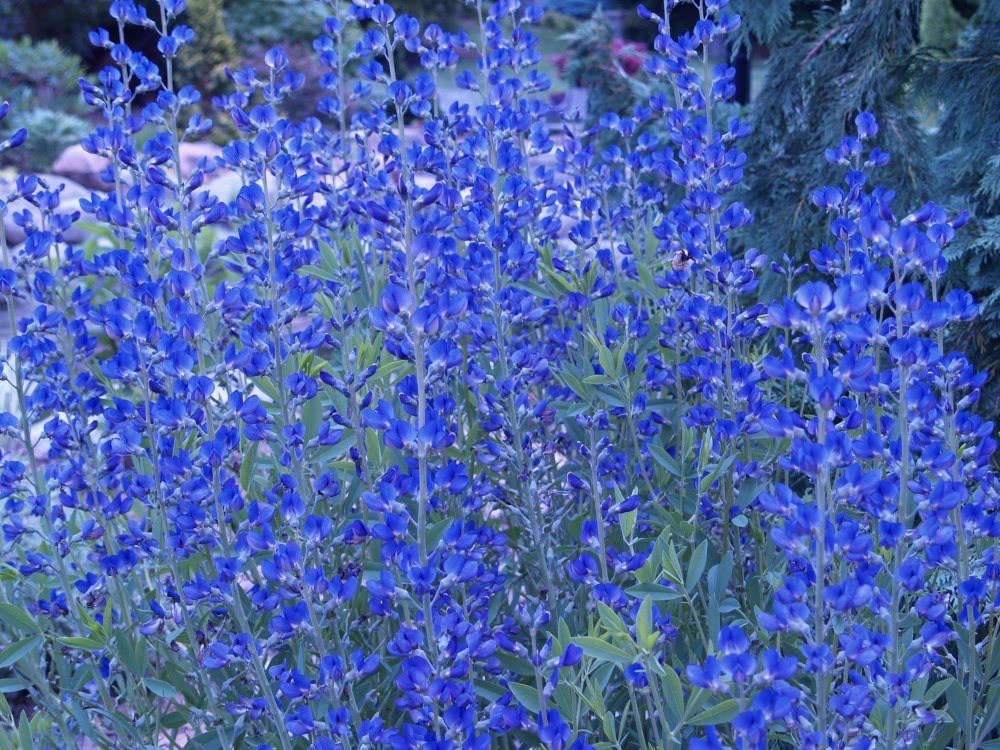
False indigo (Baptisia australis, above) has been blooming since early in the month, and of perhaps ten plants there is one that is significantly more vigorous, larger and more upright growing, and has many more and longer lasting flowers. Of course, this is the manner by which many named perennials are selected, and this plant is deserving of attention above the others, but then it is just a common baptisia. In any case, I take particular notice of it each spring.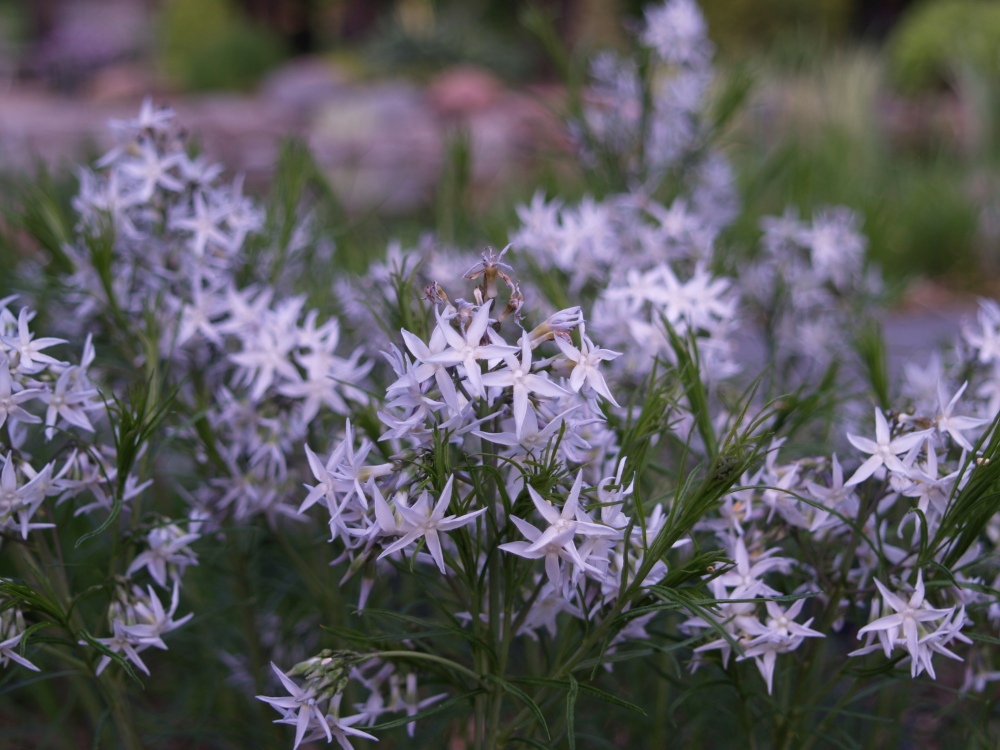
Bluestar (Amsonia hubrichtii, above) is nearly past bloom, and I have neglected to mention it over recent weeks, but it is a fine plant, attractive in bloom but also through the summer with upright clumps of thread-like foliage. I have seen marvelous photographs of its golden fall color, but in my garden it has not been quite so spectacular for whatever reason. And here I should note that there are multiple plants that go by the bluestar moniker, and to avoid this confusion is why gardeners should pay more attention to the Latin botanical names.
By chance another of the blue stars, this one Blue star creeper (Isotoma fluviatilis, above) is blooming between stones in paths through the garden. I have had problems with thymes and cultivated mosses in dry parts of the garden, but blue star creeper spreads reliably and at a pleasantly moderate pace without threatening to cover the path.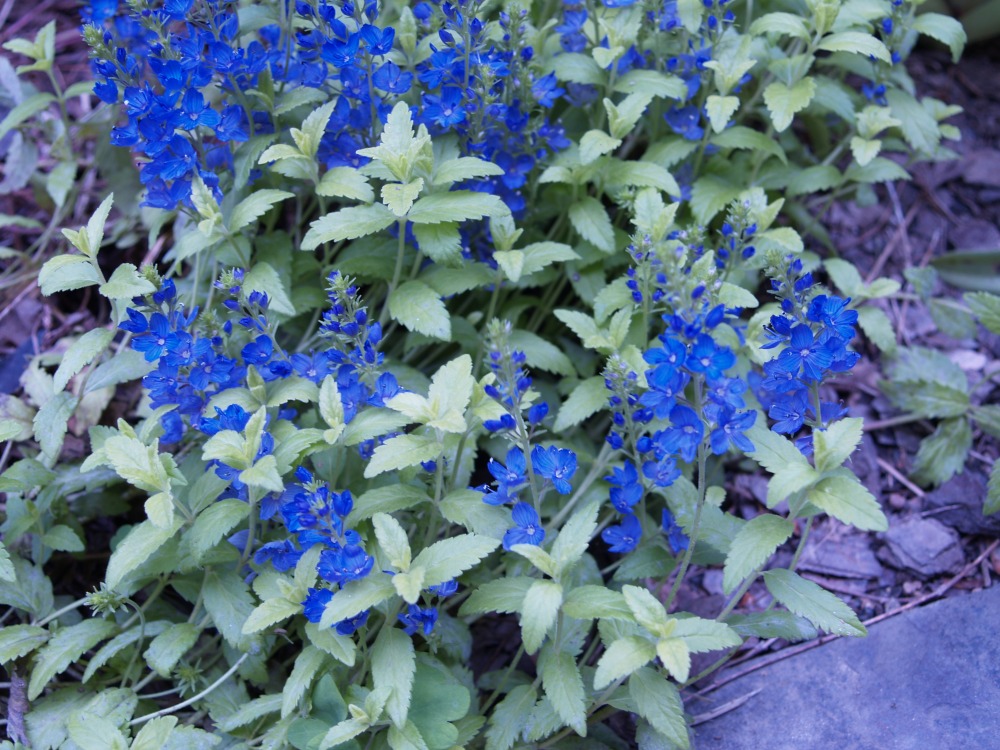
Another creeping perennial, Veronica repens ‘Sunshine’ (above) is blooming now, with short purple spikes above its low growing golden yellow leaves. This veronica has spread very slowly in my garden, but returns reliably each year.
I am careful to remove the many seedlings of columbine (above) that pop up through the veronica so it is not overwhelmed, though I allow the seedlings to remain in other parts of the garden, and of course this is another reason to treasure columbines. Even if they did not sprout a nearly endless supply of free plants the flowers of columbines are among the most beautiful in this garden, and persist for weeks. I believe that columbines are relatively short lived perennials, and this is usually my cue to avoid a plant, but it multiplies so successfully from seed that I would not consider its short life to be a problem.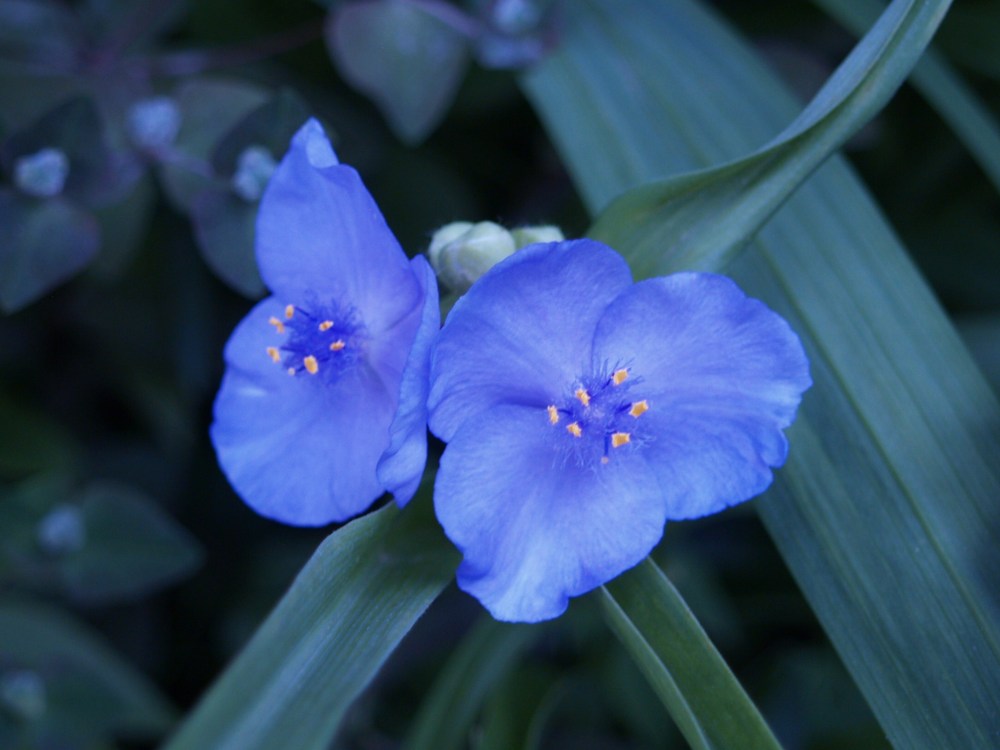
For years I have heard that spiderwort (Tradescantia, above) is weedy and a pest, vigorous and indestructible, and of course I have had no indication of this in my garden. I will admit that I have given it the least favored position in the garden, an afterthought, sliver of space wedged between the boulders at a pond’s edge and a tall nandina, with euphorbia and crocosmia ‘Lucifer’ overhanging for good measure. I am certain that I did not intend to test the limits of spiderwort’s vigor when it was first planted, but in my exuberance to plant I sometimes forget this or that is here or there, until next spring when all are blooming, and then I will forget to transplant one or the other, and so spiderwort has carved out a small space only because it is indestructible.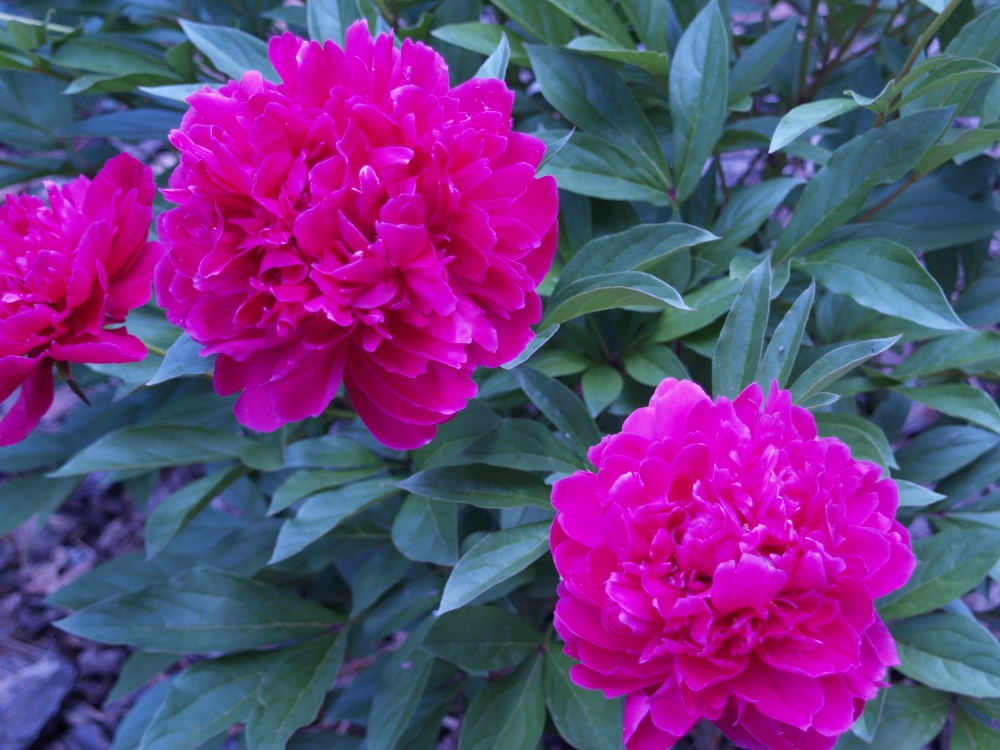
I have grown only a few peonies (Paeonia ‘Karl Rosenfield’, above) through the years because they demand a fairly large and prominent space, and I will often plant three or four plants in the space that a peony will require. Whenever they are blooming I make plans to add another variety or two, but then I face the reality that there is too little space and I will have to do without.
And now I have exhausted myself for the day. I’m certain that there are blooms that I have forgotten again, and I will catch up at some point, but now is time to relax in that new chair.
I have Virginia Spiderwort in my garden…three plants that I installed a year ago…in a sunnier location than generally recommended, but they bloomed all last summer, until the first frost, never falling dormant in midsummer as the books say they do. They grew so much that I had to remove one to another spot this spring to allow them each their requirement for space. I have never seen more beautiful specimens anywhere. They are planted in beds of compost and aided in their need for moisture by soaker hoses, but other than that I leave them alone and they have rewarded me with months of gorgeous blooms in a magnificent shade of deep purple.
I’ve mentioned that I could not have planted my spiderworts in a less desirable spot if I’d buried them under a rock, in a cave. So, I get only a few weeks of bloom and then the crocosmia and hostas overwhelm them and they’re not heard from again until next spring. I’m glad to hear your success story, perhaps I’ll try the yellow leafed variety, Sunshine I think, in full sun. I love stark contrasts, and sky blue flowers above bright yellow foliage is about all my poor old heart can stand.